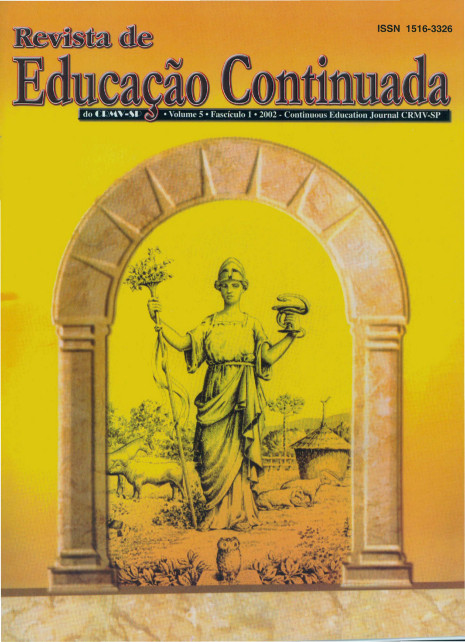Milling of the distal phalanx as treatment for osteitis in a water buffalo: case report
Main Article Content
Abstract
This report describes the surgical treatment of distal phalanx septic osteitis in a seven-month old buffalo. The animal was presented with severe support lameness of the left forelimb, a suppurate fistula on the heel of the lateral claw, increased volume and temperature in the affected area which was painful at manipulation. The radiographic examination revealed osteolysis in the distal lateral phalanx of the limbo Surgery became necessary as treatment with penicillin and sulfa did not bring satisfactory results. Milling of the affected phalanx was performed after the animal received a tranquilizer and regional anesthesia, and was placed in lateral decubitus. A boring miller and an angle cutter were used to drill the sole and remove the affected bone tissue. In the postoperative period, a protective bandage was placed and systemic antibiotics, penicillin and enrofloxacin, were given. The lameness degree was reduced and disappeared on the 30th day after surgery. After the 7th day, local alterations were no longer found during the clinical exam. Healing of the surgical lesion was satisfactory, without secretions, and healthy granulation tissue was present until the 30th day after surgery, the lesion being fully keratinized on the 36th day. The locomotor function was fully recovered twenty nine months later and the animal was still in the herd. The use of milling as a surgical treatment for septic osteitis of the distal phalanx is confirmed in the case here reported, stressing that the patient is a water buffalo, where the incidence of this disease is rare.
Article Details
1. Autores mantém os direitos autorais e concedem à revista o direito de primeira publicação, com o trabalho licenciado sob a Creative Commons Atribuição-NãoComercial-SemDerivações 4.0 Internacional
2. Autores têm autorização para assumir contratos adicionais separadamente, para distribuição não-exclusica da versão do trabalho publicada nesta revista (ex.: publicar em repositório institucional ou como capítulo de livro), com reconhecimento de autoria e publicação inicial nesta revista.
3. Autores têm permissão e são estimulados a publicar e distribuir seu trabalho online (ex.: em repositórios instituicionais ou na sua página pessoal) a qualquer ponto antes ou durante o processo editorial, já que isso pode gerar alterações produtivas, bem como aumentar o impacto e a citação do trabalho publicado (Veja O Efeito do Acesso Livre);
